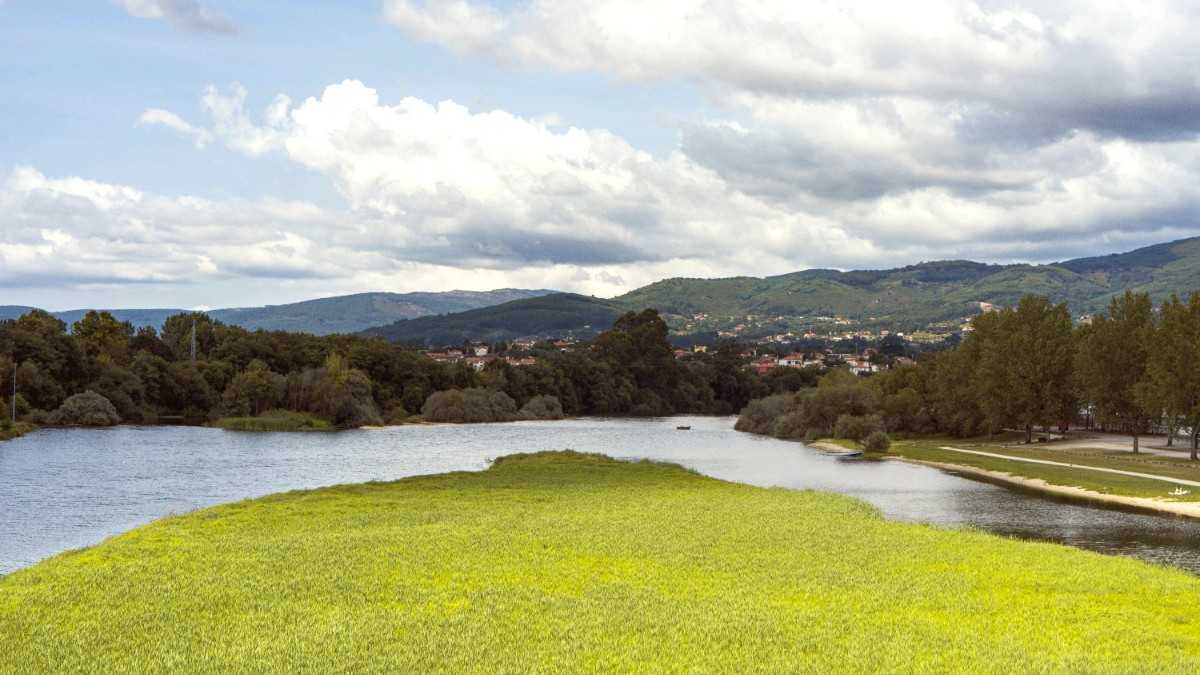
The North, Portugal
The city excels at giving a multi-faceted travel experience. You can spend mornings exploring ancient architecture, afternoons relaxing on expansive beaches, and evenings savoring fresh seafood. Its manageable size means easy exploration on foot, encouraging serendipitous discoveries around every turn. From the intricate details of a traditional costume in a museum to the panoramic sweep of the Atlantic Ocean from a hilltop, Viana do Castelo consistently delivers memorable moments. This guide helps you make the most of your time in this captivating northern city.
Viana do Castelo is a prime position in Portugal's Norte Region. It is the capital of the Viana do Castelo District. Situated on the Atlantic coast, the city developed at the mouth of the Lima River estuary, where the river meets the vast ocean. This strategic location shaped its history and character. The municipality spans approximately 319 square kilometers (123 sq mi).
The city’s geography offers a diverse landscape. You find flat, fertile plains along the Lima River that gently rise into rolling hills and mountains in the east. To the west, extensive sandy beaches stretch along the coastline, punctuated by dramatic cliffs in some areas. Its location far enough north allows it to maintain its own distinct identity, separate from Porto's bustling energy.
Viana do Castelo’s history ties deeply to Portugal’s Age of Discoveries and its maritime prowess. The city, originally Viana, gained the name "Viana da Foz do Lima" in the 15th century from King Afonso V. This title described its location at the mouth of the Lima River. This elevation in status coincided with its growing role as a port. In the 19th century, it became Viana do Castelo, acknowledging its ancient castle (Castelo de Santiago da Barra) guarding the river mouth.
The city thrived as a port for Portuguese cod fishing fleets. These ships undertook voyages to Newfoundland and Greenland, bringing back cod that became a Portuguese diet staple. This industry brought much prosperity and prominence to Viana. This reflects in the city's grand architecture and the wealth of its merchants and shipbuilders. Shipbuilding remained a source of pride and economic power for centuries.
Reflects Portugal's golden age of maritime exploration with intricate stonework.
Classical symmetry and grandeur from the European Renaissance.
Ornate decoration on churches and palaces.
Modern elegance from the 19th and early 20th centuries.
Delicate art twisting gold or silver into intricate patterns; a symbol of regional identity.
Beyond its physical structures, Viana do Castelo also holds centuries-old craft traditions. The city is renowned for its traditional gold filigree jewelry. This delicate art involves twisting fine threads of gold or silver into intricate patterns, often forming heart shapes (Coração de Viana) or elaborate earrings that adorn traditional Minho costumes. This craft, more than just jewelry, is a symbol of regional identity, passed down through generations.
These historical layers, from its maritime ventures to its artistic expressions, give Viana do Castelo a depth and character that captivates every visitor. It presents a relaxed atmosphere, a strong connection to the sea, and a deep appreciation for its past. This destination truly captures the spirit of northern Portugal.
Visitors find a relaxed atmosphere here, a pleasant contrast to larger, faster-paced cities. The rhythm of life moves at a comfortable speed, allowing time for leisurely strolls through cobbled streets, unhurried meals, and quiet moments admiring breathtaking views. People looking for a genuine Portuguese experience, away from heavily touristed areas, often find Viana do Castelo a perfect match.
This guide helps prepare you for a visit, ensuring you make the most of your time in this captivating northern city.
It is a city that lives and breathes its heritage, also embracing its coastal identity. A quick look shows its defining features:
The city retains a reputation for its friendly locals. Visitors often find a warm, genuine welcome here, fostering a sense of connection and making the experience more personal.
A remarkably well-preserved historic center. Narrow, winding cobbled streets lead to grand squares like Praça da República. This area is perfect for walking.
The Lima River estuary provides a picturesque backdrop. A pleasant riverside promenade invites leisurely strolls. Praia do Cabedelo offers an expansive sandy beach.
Perched high on Monte de Santa Luzia, the Santuário de Santa Luzia offers breathtaking panoramic views of the city, river, and Atlantic Ocean. A funicular ride to the top makes access easy.
Viana do Castelo maintains strong cultural roots. This becomes most evident in its lively folk festivals, especially the grand Romaria de Nossa Senhora d'Agonia in August. During this celebration, the city explodes with color, music, and tradition.